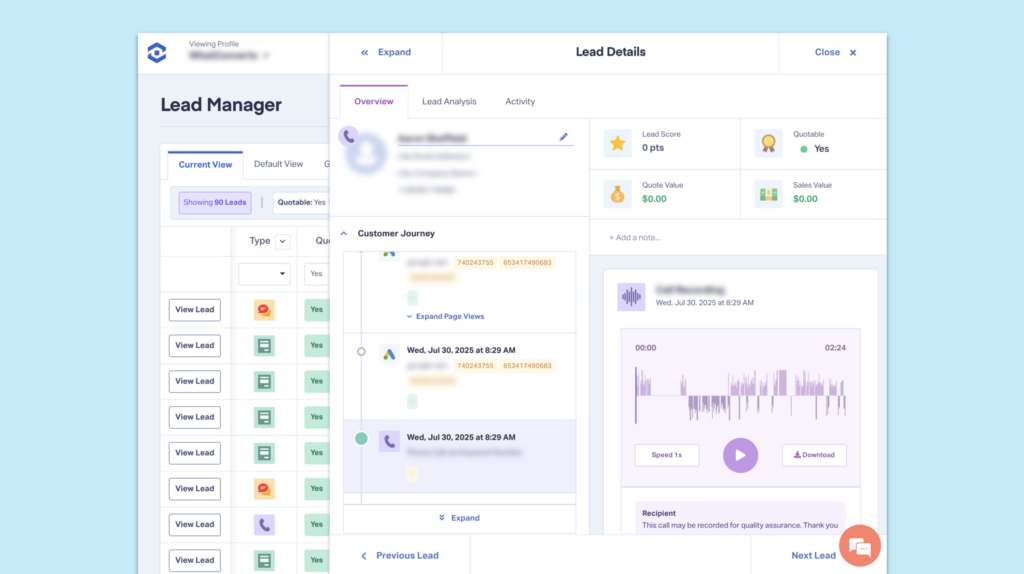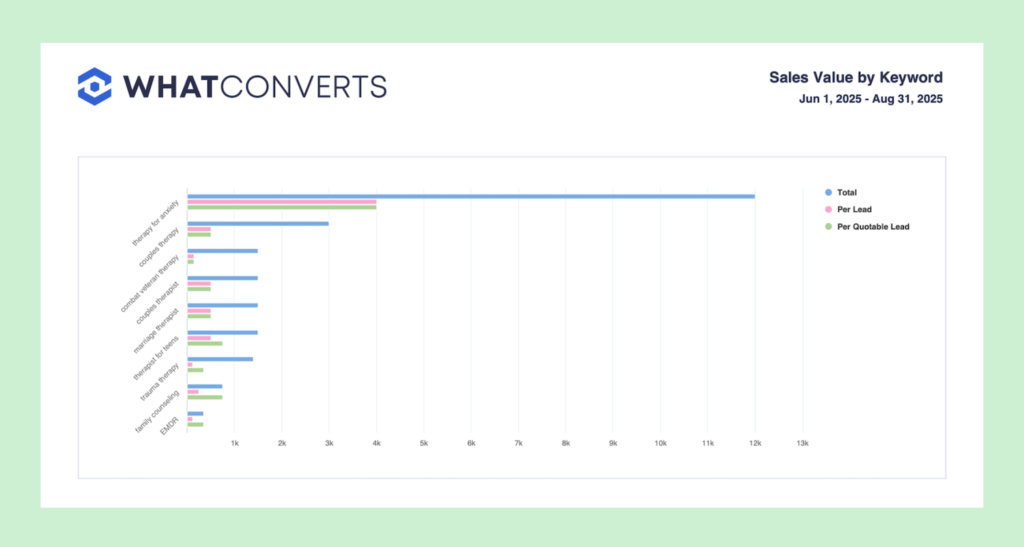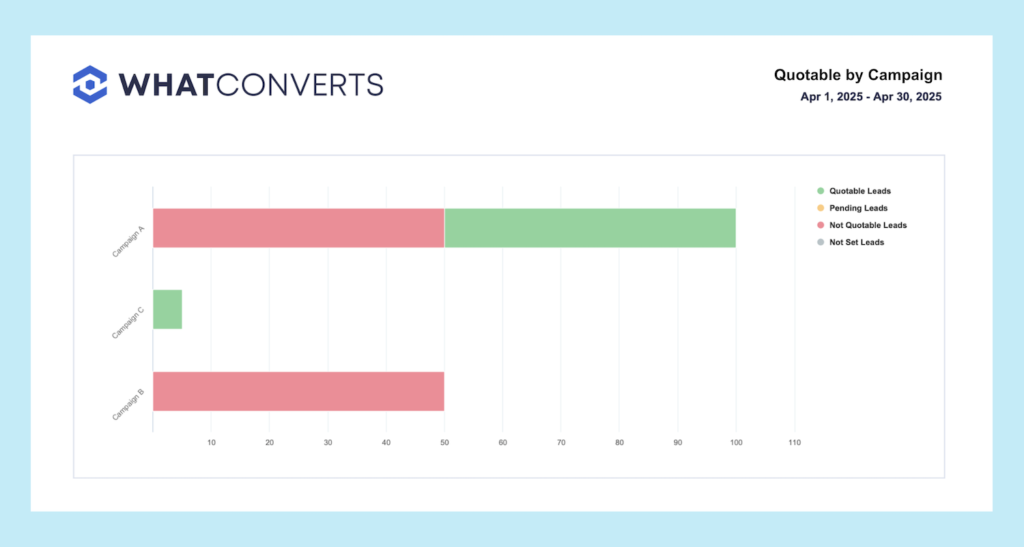
Imagine you own an amusement park with three entrances. You want to know which entrance gets the most valuable foot traffic, so each visitor gets a hand stamp that’s unique to their entrance.
At day's end, you can see your overall revenue and how many people came through each entrance. What you can’t see is how much of that revenue came through which entrance. Once visitors are in the park, what they do and spend is a complete mystery. That's because you’re not actually tracking people—you’re just counting stamps.
Now imagine that those hand stamps are actually barcodes. Visitors scan their barcodes each time they spend money on concessions or games within the park. Now you can track each and every dollar spent back to the entrance it came from, close the entrances that aren’t bringing in paying customers, and expand the entrances that bring in the most value.
This is the exact same problem marketers face when trying to figure out which of their PPC campaigns are working—not based on how many people they bring in, but on how many paying customers they generate.
When marketers adopt a system that moves from counting conversions to actually tracking outcomes back to the original marketing source, that’s revenue attribution.
Read More: Agency Untangles Attribution Knot, Scales Client to $1M [Case Study]
What Is Revenue Attribution, Exactly?
Revenue attribution is the process of tying every sales dollar earned back to the campaign or activity that generated it.
When a company reports $500,000 in revenue, revenue attribution lets you confidently say that $300,000 came from your campaigns. In fact, you can even say which specific marketing campaigns, keywords, and ads were responsible.
For agencies, revenue attribution is how you prove that what your clients are paying you is worth the cost. For businesses, it’s how you ensure your budget is working—and shows you which campaigns you should be doubling down on.
What Data Is Required for Revenue Attribution?
In our amusement park scenario, the unique barcode is what makes it possible to track revenue. Unlike the stamp counters or the concession cash registers, it tracks each action back to the person who performed it. The stamp counters and concession stand cash registers track the same information, but it’s siloed. They can’t demonstrate how the data is connected.
In marketing, revenue attribution requires three key pieces of information to be connected to each lead:
- The attribution: which marketing channel, campaign, ad, and keyword brought the lead in
- The conversion actions: what they did during and after the initial conversion (calls, form submissions, other ad clicks, etc.)
- The outcomes: whether they became a customer, and if so, how much they spent
Like the stamp counts and concession income, these data points are already being tracked separately. The ad platform tracks conversions (but can’t see what the lead does next). The CRM tracks sales (but can’t see which campaigns each customer came from).
To string these pieces together, you need your version of a “barcode” that assembles all of this data in one place and keeps it connected to the person associated with it.
In other words: you need lead tracking.
How WhatConverts Solves the Revenue Attribution Problem
WhatConverts is designed to act as that connector that ties a lead to their attribution data, conversion actions, and outcomes—all in one place, within one unified database. Normally, your data would be siloed across different platforms (like Google Ads reporting vs Facebook Ads analytics) or lead type (like calls vs. form submissions vs. chats). But WhatConverts can capture over 70 different data points across all types of channels and sources and tie it all to the leads they belong to.
Here’s how it works:
Step 1: Track Every Lead in One Place
WhatConverts uses a single, first-party tracking script to log all of a lead’s behaviors—attribution data, conversion actions, and outcomes. All data is organized in the Lead Manager, where you can open each individual lead along with their conversion actions, all events along their customer journey, and over 70 other trackable data points.
WhatConverts tracks all types of conversions as well as all types of leads. That means your Google Ads conversions are integrated with your Facebook Ads conversions, your form submission leads are integrated with your call leads, and so on. You can see exactly how effective your campaigns are, without having to compare apples and oranges across siloed data.
Step 2: Add Revenue Data
Once you’re tracking your leads individually, you can add sales values to each of your leads within the Lead Manager once they make a purchase. You can do this by either:
- Manually entering sales values in the lead profile
- Integrating directly with your CRM and setting up automatic sales value updates
If you want to track future potential, you can also assign quote values. For example, a dental office can log a quote value for a patient who schedules a root canal, based on the average cost of that procedure.
Step 3: Generate Revenue Reports
With leads and revenue tied together, WhatConverts can instantly crunch the numbers into reports that show campaign performance in dollars, not just clicks.
- For quick insights, run a Quick Report to see sales value by campaign, keyword, or any other dimension.
- For deeper analysis, use the Report Library to cross-compare multiple dimensions—for example, Sales Value by Source and Keyword—to understand not only which keywords generate revenue, but how they perform across different channels.
With this level of visibility, you can see exactly which campaigns are generating revenue and which ones aren’t.
How Lead Tracking and Revenue Attribution Make Marketers Money
Until now, we’ve used our amusement park metaphor to talk through how revenue attribution works. But to really understand exactly how revenue attribution makes you money, you need to see it in action using actual PPC examples.
Let’s say you have three Google Ads campaigns:
- Campaign A: Costs $1,000 and generates 100 conversions/month
- Campaign B: Costs $250 and generates 50 conversions/month
- Campaign C: Costs $5,000 and generates 5 conversions/month
Based on conversion counts alone, it looks like Campaign A and Campaign B are doing well. They each bring in a respectable amount of conversions at a cost of between $5-$10 per lead. Campaign C, on the other hand, looks like a disaster—and an expensive one at that.
Let’s take a look at what insights you get when you implement lead tracking and revenue attribution:
Budget Is Wasted on Hidden Underperforming Campaigns
When you start connecting sales outcomes to leads and conversions, you find something shocking. Campaign B, which looked like it had the highest ROI, is actually a complete waste of money. Not a single one of its 50 conversions turned out to be qualified leads or future customers.
You would have continued wasting $250 every single month and getting nothing in return. But thanks to lead tracking, you halt that campaign completely and instantly improve your marketing ROI.
Apparent Failures Are Actually Your Highest Value Drivers
Tracking revenue reveals another surprise: Campaign C, that “disaster” campaign, was responsible for 60% of your client’s revenue last month.
Every one of those five leads wound up becoming clients, and they each signed contracts worth $25,000 on average. Now that $1,000 it cost to acquire doesn’t look like such a waste after all. In fact, it was a downright steal.
You’re Severely Undercharging Your Clients
You’re running these campaigns for a client, who pays your agency $7,500 per month. You priced your services based on the assumption that you’re generating an estimated $15,000-$20,000 for your client monthly, for an ROI of between 2-3x.
Lead tracking shows that you actually drove $125,000 in revenue last month—offering your client an eye-watering ROI of over 16x. To get back to that 2-3x ROI, you should be charging your client between $40,000-$60,000 per month.
You Have the Evidence to Justify a Major Price Hike
Normally, the idea of raising a client’s prices from $15,000 to $40,000 would sound impossible. But since you have concrete proof that shows you drive three times that in revenue, it suddenly doesn’t seem like such an absurd ask. You get to walk into your reporting meetings with confidence, instead of dealing with anxiety over how your client will react to each month’s results.
Turning Data Into Proof
At the end of the day, clients don’t stay with an agency because of clicks, conversions, or traffic. They stay because marketing puts money in their bank account. Revenue attribution gives you the hard evidence to prove it.
When you connect every lead to its source, track the full customer journey , and tie outcomes to revenue, you move beyond vanity metrics and guesswork. You know exactly which campaigns are profitable, which ones are wasting budget, and how much revenue your work is really driving.
Ready to prove your marketing is worth what it costs? Sign up for a free WhatConverts trial today and see exactly which campaigns are driving revenue.
Get a FREE presentation of WhatConverts
One of our marketing experts will give you a full presentation of how WhatConverts can help you grow your business.
Schedule a Demo
Grow your business with WhatConverts









